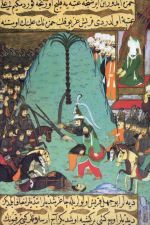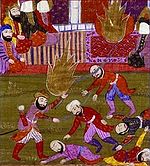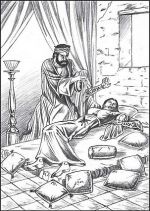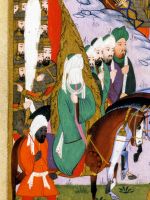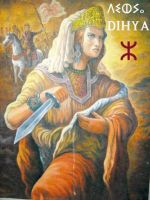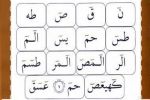Portal: Early Islamic History
The first centuries of the Islamic Hijri calendar, starting in the CE year 622, were the formative years of the religion. Between the first and third Islamic centuries the Qur'an was written down and codified, the prophet lived and died, the great hadith collections were gathered, the sira of the prophet was committed to writing, the great schools of Sunni jurisprudence came to be, and the theology of Islam attained its familiar form. The end of the Abbasid period saw the "crystallization" of the Islamic tradition around the Sunnah of the prophet and the Qur'an placed in creation before all time and space after the defeat of the Mu'atazilite heresy. These years thus can be said to cover the formation of the religion of Islam as we know it today (see also History of Islamic Thought).
Career of the Prophet
The career of the prophet forms the basis of his Sunnah, as such his doings are of utmost importance to the latter generations of believers. Muhammad also shows up in the non-Islamic history of the region, though surprisingly not where we might expect him to be from the Islamic narrative.
The battle of Badr was the prophet's first battle and one of his most successful; Muhammad's success here gave faith, both to himself and the movement, and the tradition sees proof of divine aide both in the Qur'an and the sira account of the battle.
The massacre of the Jewish tribe of Banu Qurayzah remains one of the most controversial events of the sira to this day; a great victory for Muhammad and the Muslims, the mercilessness with which he dealt with his Jewish enemies leaves many questions about the character of the prophet.
Muhammad ordered many people who oppossed him or the Muslim movement to be killed.
The original title of the works of the sira were the maghaazi مغازي or raids; the career of the prophet from the earliest times was defined by his military adventures.
Other articles in this section
The Early Caliphates
Although not technically part of the "holy history" of Islam which ends with the death of the prophet and the sealing of the holy prophetic example, the years of the Rashidun Caliphs, the Umayyads and the Abassids were absolutely instrumental in the formation of Islam as we now know it. It was during this time that the Uthmanic recension of the Qur'an was canonized and all other versions were annihilated; it was in the early years of the Rashidun caliphs that the word "Muslim" came to define the movement as opposseed to the earlier "believer", and it was under the Umayyads and Abassids that the doctrine of the prophetic example was formulated, the Sunnah was assembled and the place of the caliph in the ummah was finally fixed.
Dihya was a Berber queen who fiercely resisted the expanding caliphate to her death.
The caliphate, or success state to the prophet, in orthodox Sunni Islam is seen as the continuation of the rule of the prophet of Allah by his viceroy on earth, and is a divinely ordained institution.
Other articles in this section
The Formation of the Qur'an and Classical Arabic
The Qur'an, and with it the classical Arabic language took place during this period. Before the rise of Islam, Arabic did not have one standardized script or grammar, and various dialects were written in various scripts such as Nabatean Aramaic, Syriac, Greek, and many others. The writing of the Qur'an coincided with the crystallization of the modern Arabic script, and the history of the Arabic and its script are deeply interwoven with the history of the Qur'an.
The Qur'an was never put down to writing as a complete book during the prophet's lifetime, according to the Islamic sources. The impetus to put the Qur'an to writing came from the death of many of the Muslims who had memorized it.
Many of the chapters of the Qur'an begin with mysterious combinations of letters whose function remains unclear to this day.
